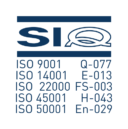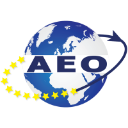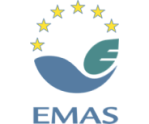Last year, Luka Koper inaugurated its new Living with the Port website – www.zivetispristaniscem.si – in order to allow direct and open communication with the local community as well as all those interested in the sustainable development of ’s sole seaport. Henceforth this portal also provides online information in real time as to noise level measurements recoded at two points in the vicinity of the port zone.
Since the establishment of the website measurement data on airborne dust particles maybe monitored directly, and the results thus far are encouraging: the legally prescribed threshold value has not been exceeded. The air we breathe in Koper is less-polluted and certainly no worse than in other towns and cities across .

The table below gives noise emissions: Lday, Levening, Lnight and the overall average Lday/night prescribed by the Regulation on limit values of noise indicators in the environment. As an industrial and commercial zone the area of the Port of Koper falls under the Level IV, whilst residential areas and the immediate neighbourhood beyond the port zone are categorised under Level III of protection against noise.

Noise measurements for 2008 (the data for 2009 has yet to be finalised) indicated somewhat increased values, which can be attributed to the construction works in the extension of Pier I (in particular pile driving) and the creation of the new Passenger Terminal (which included demolition of warehouses Nos. 7 and 8, and the creation of facilities for enhanced handling capacities in relation to passenger vessels calling at Koper). External factors beyond the control or influence of Luka Koper, such as noise from residential areas and highway traffic, should also be taken into consideration.
Dust particle measurements are encouraging
As an organisation authorised to undertake such analyses, the Institute of Natural and Technical Sciences at the University of Primorska , has longstanding experience of airborne particulate matter monitoring. Ongoing measurements using the most-advanced instruments are taken as to the quantity of airborne PM10 particulates (i.e. particles not bigger than 10 μm) which present a hazard to human health.

The above graph illustrates the value of PM10 particulates recorded at the Rožnik measurement station and compares them with measurements taken by the Environmental Agency of the Republic of Slovenia at Markovec. According to the regulations, the threshold value might be exceeded 35-times during the year, but data from previous years indicates that the average value is way below this limit.
Annual measurements at Koper were compared with PM10 measurements performed by the national Environmental Agency in other towns and cities across . The comparisons indicate lower emissions in the vicinity of the port than in other places in . The illustration below provides average annual concentrations.

Over recent years, and through the provision of remedial measures and devices – such as anti-dust curtains, water sprays and enclosed conveyors – Luka Koper has invested a great deal into reducing the environmental impacts of operations at the Port of Koper . Handling and storage systems of cargos disposed to emissions are constructed in compliance with best available technologies, solutions which are nowadays a prerequisite for the issue of building, operational and environmental protection permits.
The company will further adapt new investments, the acquisition of plant and equipment, as well as spatial plans, to the highest ecological standards. We aim to build a green port which is self-sufficient in terms of energy and develops in harmony with nature and the local community.




